 W
WUrsidae is a family of mammals in the order Carnivora, which includes the giant panda, brown bear, and polar bear, and many other extant and extinct mammals. A member of this family is called a bear or an ursid. They are widespread across the Americas and Eurasia. Bear habitats are generally forests, though some species can be found in grassland and savana regions, and the polar bear lives in arctic and aquatic habitats. Most bears are 1.2–2 m (4–7 ft) long, plus a 3–20 cm (1–8 in) tail, though the polar bear is 2.2–2.44 m (7–8 ft) long, and some subspecies of brown bear can be up to 2.8 m (9 ft). Weights range greatly from the sun bear, which can be as low as 35 kg (77 lb), to the polar bear, which can be as high as 726 kg (1,600 lb). Population sizes vary, with six species classified as vulnerable with populations as low as 500, while the brown bear has a population of over 100,000 and the American black bear around 800,000. Many bear species primarily eat specific foods, such as seals for the polar bear or termites and fruit for the sloth bear, but with the exception of the giant panda, which exclusively eats bamboo, ursids are omnivorous when necessary. No ursid species have been domesticated, though some bears have been trained for entertainment.
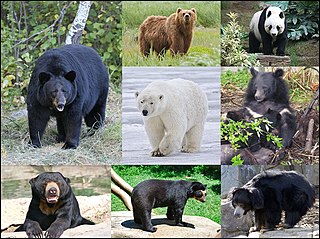 W
WBears are carnivoran mammals of the family Ursidae. They are classified as caniforms, or doglike carnivorans. Although only eight species of bears are extant, they are widespread, appearing in a wide variety of habitats throughout the Northern Hemisphere and partially in the Southern Hemisphere. Bears are found on the continents of North America, South America, Europe, and Asia. Common characteristics of modern bears include large bodies with stocky legs, long snouts, small rounded ears, shaggy hair, plantigrade paws with five nonretractile claws, and short tails.
 W
WAiluropoda is the only extant genus in the ursid (bear) subfamily Ailuropodinae. It contains one living and three fossil species of panda.
 W
WAiluropodinae is a subfamily of Ursidae that contains only one extant species, the giant panda of China. The fossil record of this group have shown that various species of pandas were more widespread across the Holarctic, with species found in places such as Europe, much of Asia and even North America. The earliest pandas were not unlike other modern bear species in that they had an omnivorous diet but by around 2.4 million years, pandas have evolved to be more herbivorous.
 W
WThe Balochistan black bear is a subspecies of the Asian black bear occurring in the Balochistan Mountains of southern Pakistan and Iran. It has an unusually thin coat for an Asian black bear, but this is because it is found in a warmer climate than most of the other subspecies, which are found in the much colder Himalayan Mountains. It is also more frugivorous than the other subspecies, and it loves to eat figs and bananas.
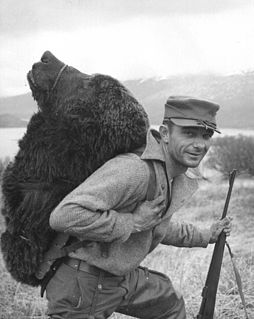 W
WBear hunting is the act of hunting bears. Bears have been hunted since prehistoric times for their meat and fur. In addition to being a source of food, in modern times they have been favoured by big game hunters due to their size and ferocity. Bear hunting has a vast history throughout Europe and North America, and hunting practices have varied based on location and type of bear.
 W
WThe bear as heraldic charge is not as widely used as the lion, boar or other beasts.
 W
WA bear pit was historically used to display bears, typically for entertainment and especially bear-baiting. The pit area was normally surrounded by a high fence, above which the spectators would look down on the bears.
 W
WBear spray is a specific aerosol bear deterrent, whose active ingredients are capsaicin and related capsaicinoids, that is used to deter aggressive or charging bears.
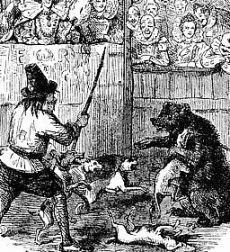 W
WBear-baiting is a blood sport involving the worrying or tormenting (baiting) of bears with dogs. It may also involve pitting a bear against another animal.
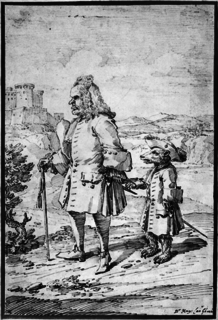 W
WA bear-leader was formerly a man who led bears about the country. In the Middle Ages and the Tudor period, these animals were chiefly used in the blood sport of bear-baiting and were led from village to village. Performing bears were also common; their keepers were generally Frenchmen or Italians.
 W
WBear-resistant food storage containers, also called bear canisters or bear cans, are usually hard-sided containers used by backpackers to protect their food from theft by bears. Bear canisters are seeing increased popularity in areas where bears have become habituated to human presence, and are required in some places, such as Yosemite National Park in the United States.
 W
WBear's grease was a popular treatment for men with hair loss from at least as early as 1653 until about the First World War. The myth of its effectiveness is based on a belief that as bears are very hairy, their fat would assist hair growth in others. Nicholas Culpeper, the English botanist and herbalist wrote in 1653, in his The Physician's Library, "Bears Grease staies [stops] the falling off of the hair." Hildegard of Bingen (1098–1179), Benedictine mystic, composer and woman of letters, also recommended the use of the substance in her Physica. A number of cosmetics companies sold bear's grease, and it was a trademark of Atkinsons of London, who sold "Bears Grease Pomade".
 W
WThere are many grizzly bears and black bears in Anchorage, Alaska.
 W
WBile bears, sometimes called battery bears, are bears kept in captivity to harvest their bile, a digestive fluid produced by the liver and stored in the gallbladder, which is used by some traditional Asian medicine practitioners. It is estimated that 12,000 bears are farmed for bile in China, South Korea, Laos, Vietnam, and Myanmar. Demand for the bile has been found in those nations as well as in some others, such as Malaysia and Japan.
 W
WThe Florida black bear is a subspecies of the American black bear that has historically ranged throughout most of Florida and the southern portions of Georgia, Alabama, and Mississippi. The large black-furred bears live mainly in forested areas and have seen recent habitat reduction throughout the state due to increased human development, as well as habitat modifications within bear habitat.
 W
WThe Formosan black bear, also known as the white-throated bear, is a subspecies of the Asiatic black bear. It was first described by Robert Swinhoe in 1864. Formosan black bears are endemic to Taiwan. In 2001, they were voted the most representative wildlife of Taiwan in a half-year-long countrywide voting campaign. They are also the largest land animals and the only native bears (Ursidae) in Taiwan.
 W
WThe glacier bear, sometimes referred to as the blue bear, is a subspecies of American black bear with silver-blue or gray hair endemic to Southeast Alaska. Little scientific knowledge exists of their total extent and the cause of their unique coloration. Most of the other black bears in southeast Alaska are listed under the subspecies Ursus americanus pugnax. The USDA Forest Service lists U. a. emmonsii as one of several subspecies of black bears, although no evidence supports the subspecies designation other than hair coloration.
 W
WThe sun bear is a species in the family Ursidae occurring in the tropical forests of Southeast Asia. It is the smallest bear, standing nearly 70 centimetres at the shoulder and weighing 25–65 kilograms. It is stockily built, with large paws, strongly curved claws, small rounded ears and a short snout. The fur is generally jet-black, but can vary from grey to red. Sun bears get their name from the characteristic orange to cream coloured chest patch. Its unique morphology—inward-turned front feet, flattened chest, powerful forelimbs with large claws—suggests adaptations for climbing.
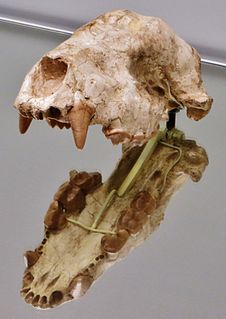 W
WIndarctos is an extinct genus of bear, endemic to North America, Europe and Asia during the Miocene. It was present from ~11.1 to 5.3 Ma, existing for approximately 6.2 million years .
 W
WBears were once common in Ireland but are now extinct on the island, dying out in the 1st millennium BC.
 W
WThe lava bear is a variety of American black bear found in the lava beds of south central Oregon. The animal was described as a very small bear with wooly light brown fur. The few lava bears that were killed or captured were a little larger than a badger. It was once thought to be a separate species. However, scientists who examined the specimens determined that the animals were stunted due to the harsh environment in which they lived. Today, it is acknowledged that lava bears never existed as a unique species.
 W
WThe sloth bear is a myrmecophagous bear species native to the Indian subcontinent. It feeds on fruits, ants and termites. It is listed as Vulnerable on the IUCN Red List, mainly because of habitat loss and degradation.
 W
WThe sloth bear is a myrmecophagous bear species native to the Indian subcontinent. It feeds on fruits, ants and termites. It is listed as Vulnerable on the IUCN Red List, mainly because of habitat loss and degradation.
 W
WThe spectacled bear, also known as the Andean bear, Andean short-faced bear, or mountain bear and locally as jukumari, ukumari (Quechua) or ukuku, is the last remaining short-faced bear. Its closest relatives are the extinct Florida spectacled bear, and the giant short-faced bears of the Middle to Late Pleistocene age. Spectacled bears are the only surviving species of bear native to South America, and the only surviving member of the subfamily Tremarctinae. The species is classified as Vulnerable by the IUCN because of habitat loss.
 W
WThe Sri Lankan sloth bear is a subspecies of the sloth bear which is found mainly in lowland dry forests in the island of Sri Lanka.
 W
WThe sun bear is a species in the family Ursidae occurring in the tropical forests of Southeast Asia. It is the smallest bear, standing nearly 70 centimetres at the shoulder and weighing 25–65 kilograms. It is stockily built, with large paws, strongly curved claws, small rounded ears and a short snout. The fur is generally jet-black, but can vary from grey to red. Sun bears get their name from the characteristic orange to cream coloured chest patch. Its unique morphology—inward-turned front feet, flattened chest, powerful forelimbs with large claws—suggests adaptations for climbing.
 W
WThe sun bear is a species in the family Ursidae occurring in the tropical forests of Southeast Asia. It is the smallest bear, standing nearly 70 centimetres at the shoulder and weighing 25–65 kilograms. It is stockily built, with large paws, strongly curved claws, small rounded ears and a short snout. The fur is generally jet-black, but can vary from grey to red. Sun bears get their name from the characteristic orange to cream coloured chest patch. Its unique morphology—inward-turned front feet, flattened chest, powerful forelimbs with large claws—suggests adaptations for climbing.
 W
WA tame bear, often called a dancing bear, is a wild bear captured when young, or born and bred in captivity, and used to entertain people in streets or taverns. Dancing bears were commonplace throughout Europe and Asia from the Middle Ages to the 19th century, and can still be found in the 21st century in some countries.
 W
WThe Tremarctinae or short-faced bears is a subfamily of Ursidae that contains one living representative, the spectacled bear of South America, and several extinct species from four genera: the Florida spectacled bear, the North American short-faced bears of genera Plionarctos and Arctodus, and the South American giant short-faced bears of Arctotherium. The group is thought to have originated in eastern North America, and then invaded South America as part of the Great American Interchange.
 W
WThe Tremarctinae or short-faced bears is a subfamily of Ursidae that contains one living representative, the spectacled bear of South America, and several extinct species from four genera: the Florida spectacled bear, the North American short-faced bears of genera Plionarctos and Arctodus, and the South American giant short-faced bears of Arctotherium. The group is thought to have originated in eastern North America, and then invaded South America as part of the Great American Interchange.
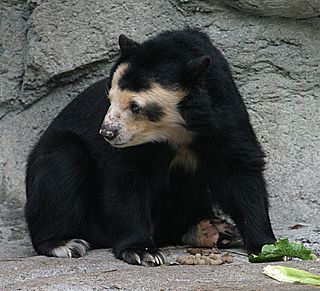 W
WTremarctos is a genus of the bear subfamily Tremarctinae, endemic to Americas from the Pliocene to recent. The northern species, the Florida short-faced bear, was extinct 11,000 years ago. The sole living Tremarctos species is the South American spectacled bear.
 W
WThe Ursari or Richinara are the traditionally nomadic occupational group of animal trainers among the Romani people.
 W
WUrsinae is a subfamily of Ursidae (bears) named by Swainson (1835) though probably named before Hunt 1998. It was assigned to Ursidae by Bjork (1970), Hunt (1998) and Jin et al. (2007).
 W
WUrsus is a genus in the family Ursidae (bears) that includes the widely distributed brown bear, the polar bear, the American black bear, and the Asian black bear. The name is derived from the Latin ursus, meaning bear.
 W
WThe American black bear is a medium-sized bear native to North America. It is the continent's smallest and most widely distributed bear species. American black bears are omnivores, with their diets varying greatly depending on season and location. They typically live in largely forested areas but will leave forests in search of food. They are sometimes attracted to human communities because of the immediate availability of food. The American black bear is the world's most common bear species. The fur, though usually black, is not always this color. Some subspecies do not show as black.
 W
WThe brown bear is a large bear species found across Eurasia and North America. In North America, the populations of brown bears are called grizzly bears. It is one of the largest living terrestrial members of the order Carnivora, rivaled in size only by its closest relative, the polar bear, which is much less variable in size and slightly bigger on average. The brown bear's range includes parts of Russia, Central Asia, China, Canada, the United States, Hokkaido, Scandinavia, the Balkans, the Picos de Europa and the Carpathian region, especially Romania, Bulgaria, Iran, Anatolia and the Caucasus. The brown bear is recognized as a national and state animal in several European countries.
 W
WYellowstone Bear World is a privately owned drive-thru wildlife park. It is located in Rexburg, Idaho, near Yellowstone National Park. It was established in 1998.